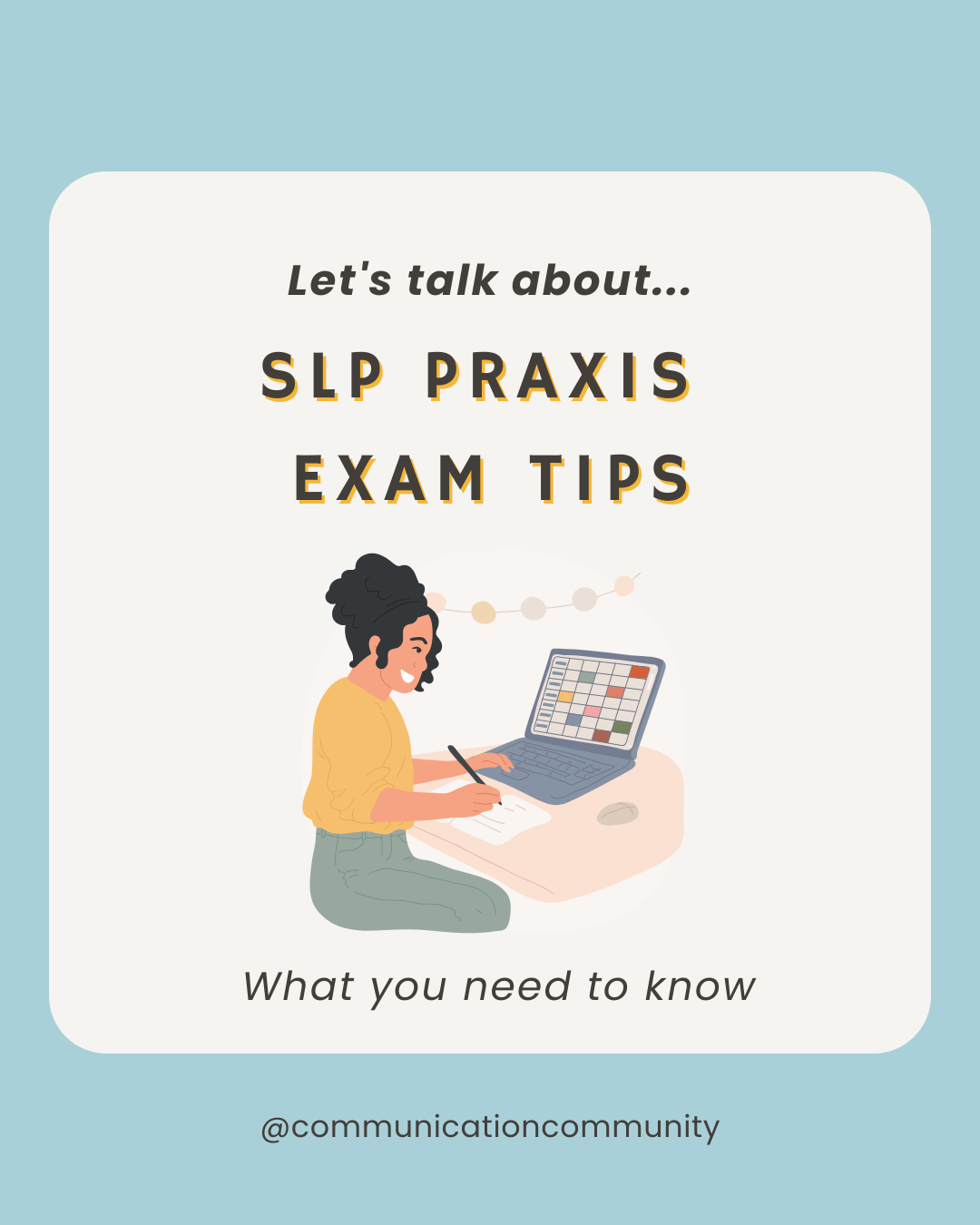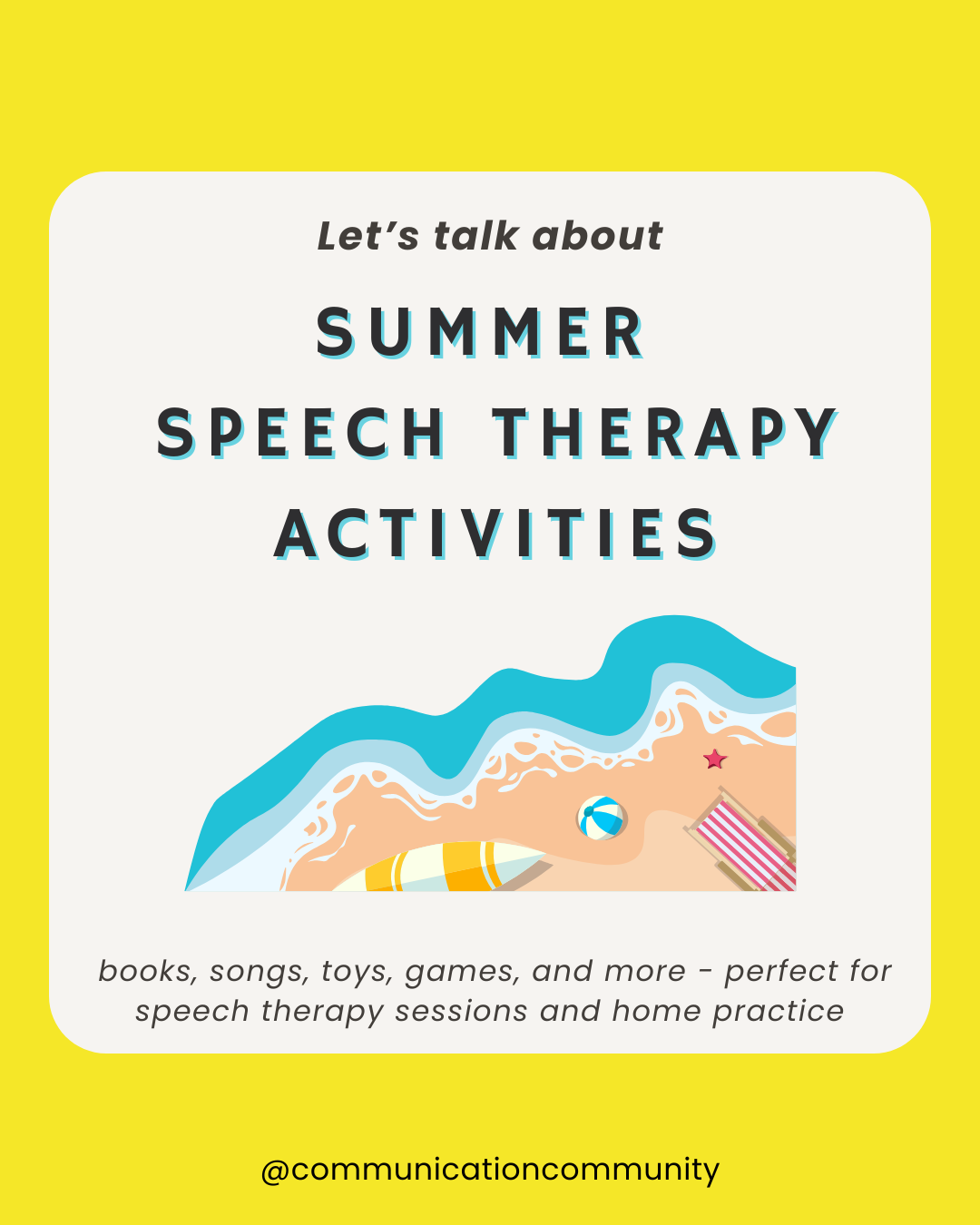Spring is a season of new beginnings and growth, making it the perfect theme for speech therapy activities that require little to no prep. These activities can make therapy sessions more enjoyable and offer opportunities to target a wide range of speech and language skills. We think the best kinds of activities are the ones that you can use to target various skills at different levels!
Check out some of our favorite low-prep speech activities for the spring:
1) Spring Wordless Videos
If you’re a regular on our site, you know that we love using wordless videos in therapy! Wordless videos may be our greatest go-to versatile resource that can be used with almost all ages; in individual sessions or groups. They are brief, yet still contain a tremendous amount of content that supports a variety of skill development. Utilizing wordless videos with a screen share feature (I’m looking at you teletherapists), also comes in incredibly handy. Especially, for annotating what’s going on in different scenes. Check out a few of our favorite spring-themed videos below:
Spring Nature Time Lapse
By: National Geographic
Sweet Cocoon
By: ESMA
Spring
By: Andy Goralczyk
Note: Themes in this video may be more appropriate for older children (some fear)
We weren’t kidding when we said we mentioned wordless videos a lot in our posts! If you’re looking for more, check out some of our other articles (with links):
- 10+ Best Wordless Videos for Speech Therapy: Animated Shorts
- Wordless Videos for Speech Therapy and at Home
- More Wordless Videos for Speech Therapy and at Home
- Holiday Wordless Videos
Skills to target: emotional/situational inferencing, making predictions, commenting/responding to questions, expanding sentence structures, navigating problems, retelling
2) Spring Visual Scenes
Spring visual scenes (pictures or videos showcasing spring settings) are excellent for encouraging descriptive language and expanding vocabulary (among many other things). Find a scene using a quick Google Images search or on a free stock photos site like Pexels. You can also create them using Artificial Intelligence (AI) on sites such as Chat GPT and Canva. Visual scenes offer opportunities to discuss what is seen, predict what might happen next, and infer how characters are feeling or what they are doing.
Skills to target: Descriptive language, sentence structure, vocabulary, inferencing/predicting, various additional language concepts (e.g., prepositions)
3) Spring Songs and Rhymes
Songs and rhymes with a spring theme can enhance phonological awareness and are a fun way to practice articulation targets. Additionally, the repetitive and rhythmic nature of songs and rhymes aids in memory retention, making them an effective strategy for learning new vocabulary and concepts. Side note: I once was stuck figuring out a way to target parts of speech with one of my clients who required more support to attend, and I ended up making up a (incredibly basic) song about nouns and it was a huge success!
Skills to target: Phonological awareness, articulation, auditory comprehension, expressive language
4) Spring Vocabulary Activities
Spring vocabulary can be targeted within books/stories, bingo, and worksheets, as well as through other mediums! One of the easier DIY spring vocabulary activities I like to do is write a bunch of spring words down on a piece of paper (the complexity of the words can vary depending on the individual(s) you are working with) and take turns drawing each word out of a hat. Depending on the word selected, you can instruct your client(s) to write a sentence containing the word, draw a picture containing the word, state a word associated with the chosen word, or even ask WH questions related to the word (e.g., flower → where can you find flowers? What helps a flower grow?).
Skills to target: Vocabulary understanding/recognition, listening skills, literacy skills, categorizing, WH question asking/understanding
5) Spring Short Stories
Books and stories are a go-to for any occasion or season. Books/stories are some of the most versatile of materials. We created an affordable, no prep resource Spring Short Stories With WH Comprehension Questions that supports a variety of skills.
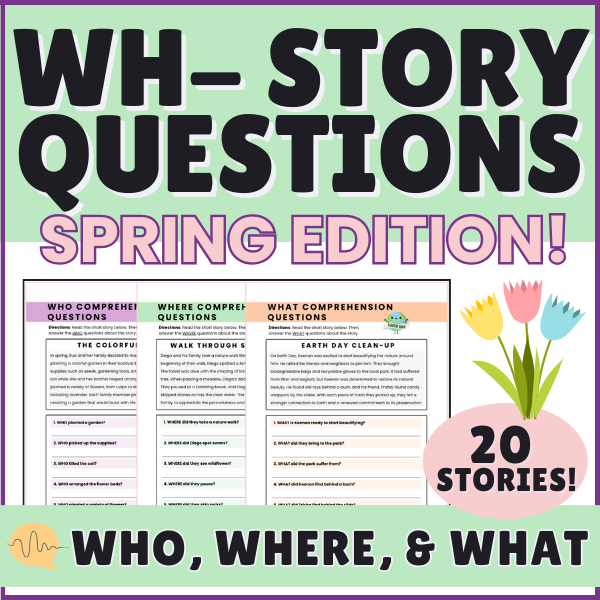
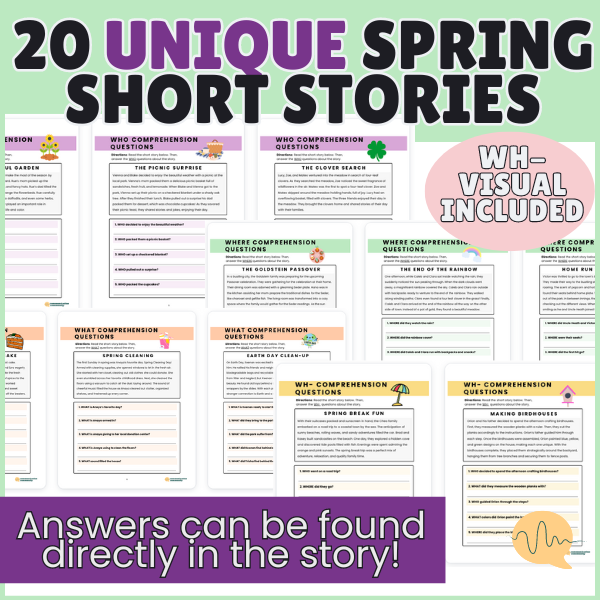
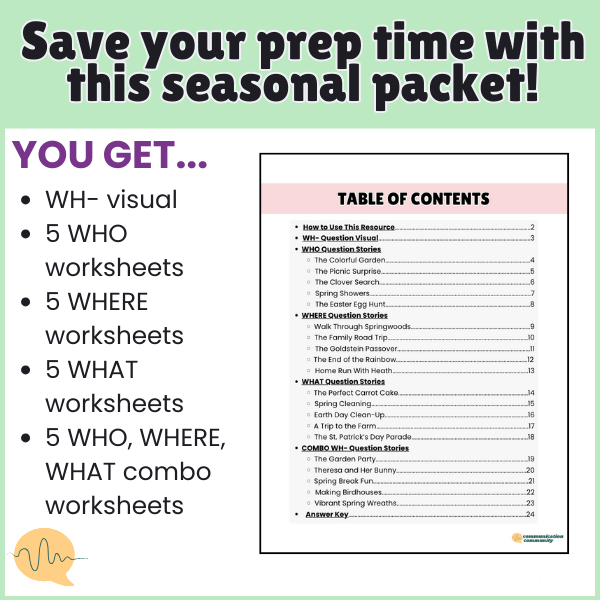
Check it out in our TPT Store (click here) or find it included in our Premium Resource Library within our time and cost-saving Community membership!
Some of our other spring books include:*
- The Tiny Seed by Eric Carle
- Planting a Rainbow by Lois Ehlert
- Fletcher and the Springtime Blossoms by Julia Rawlinson
- And Then It's Spring by Julie Fogliano
- How to Catch a Leprechaun by Adam Wallace
- Up in the Garden and Down in the Dirt by Kate Messner
Skills to target: WH- question answering/understanding, reading comprehension, analyzing text, recalling details, describing story elements, summarizing information.
6) Spring Scavenger Hunt
A spring scavenger hunt, whether indoors with hidden objects or outdoors in nature can be used for following complex directions (e.g., “Before you find a green leaf, find a blooming flower”), using specific vocabulary (e.g., pollinate, sprout, bloom), and engaging in interactions with a variety of communication partners (e.g., “Can you help me find the ___?”). It's an active, hands-on way to explore seasonal changes and can be adapted to a bunch of speech and language goals.
Skills to target: Following directions, social communication, vocabulary development, sensory/descriptive elements
7) Spring Cleaning Activity
This may sound a little bizarre, but participating in a “spring cleaning” activity (usually more like “spring organizing”) within your therapy space/classroom can be both hands-on and rich with language opportunities! Why not involve the clients who use your materials/resources each day in the process of organizing toys and materials? When I’ve done this, I’ve found that we usually discover some very cool materials I forgot about along the way! This activity can provide your clients with opportunities to practice categorizing familiar materials, sequencing terms (e.g., first, next, last), and following a variety of multi-step directions in a functional context/setting (e.g., “Find the blue bear, then put it on the middle shelf”).
Skills to target: Sequencing, following directions, executive functioning, sorting/matching, categorizing
8) Spring Sequence Snapshots
Spring brings so much growth and development that “sequence snapshots” are a fab way to incorporate temporal concepts and storytelling into the exciting changes of the spring season. Describe the sequence of a spring event (e.g., planting a seed, it growing, blossoming into a flower) and have the client retell the story, either verbally or with drawings. Spring events can be shared using pictures, YouTube short clips, or even short stories. These activities help support understanding sequences and narrative development. To make this skill more complex, I may ask my client to use their “sequencing/temporal terms” (e.g., before, after, then) when retelling events from the sequence.
Skills to target: Sequencing, auditory comprehension, narrative skills, understanding, temporal/sequencing terms, expressive language
9) News Report Role-Play
Role-playing as a news/weather reporter for the spring season allows clients to practice an array of expressive language concepts (e.g., summarizing details, using correct verb tense, etc.) in a structured but fun context. It also supports the development of social pragmatics skills as clients learn to convey information clearly; simulating more of a real-life social interaction. I find this activity is also great for group collaboration and navigating situations that require some negotiating and compromising. For example, I might say, “Okay, the news team has 4 members: 2 reporters, 1 camera person, 1 writer. Work together to assign each role and describe 1 reason why you find that role interesting (expressing opinions).”
One of my go-to sites to get kid-friendly current events is Dogo News.
Skills to target: Expressive language concepts (e.g., using descriptive language), summarizing/recalling information, pragmatic language, discriminating between facts and opinions
10) Picnic Planning
Planning a picnic requires clients to think through the sequence of actions needed, from choosing a day based on the weather to selecting and preparing food. If incorporating food isn’t a realistic option for your setting, perhaps this activity can focus more on outdoor activities, such as a “Field Day” event. This planning activity fosters problem-solving skills and encourages perspective taking as clients consider what they, as well as others, might enjoy, and supports language development through the discussion and planning process. This is a personal favorite of mine for groups AND it can be gradually worked on over the course of several weeks - then you all can enjoy real picnic/event they’ve worked hard for!
Skills to target: Goal development and planning, perspective taking, executive functioning, problem solving
There you have it! - some of our favorite go-to, EASY spring-themed activities for therapy.
Curious about our all-time favorite TIME-SAVING speech resource? 👇
It’s our Membership Community! 🤩
Within our Membership Community, find hundreds of pages of instantly downloadable seasonally-themed materials (among many other resources, nearly $1000 in total value).
Take a peek at some of what you will find inside… yep, that’s a ton of newly created as well as ALL of our paid materials.
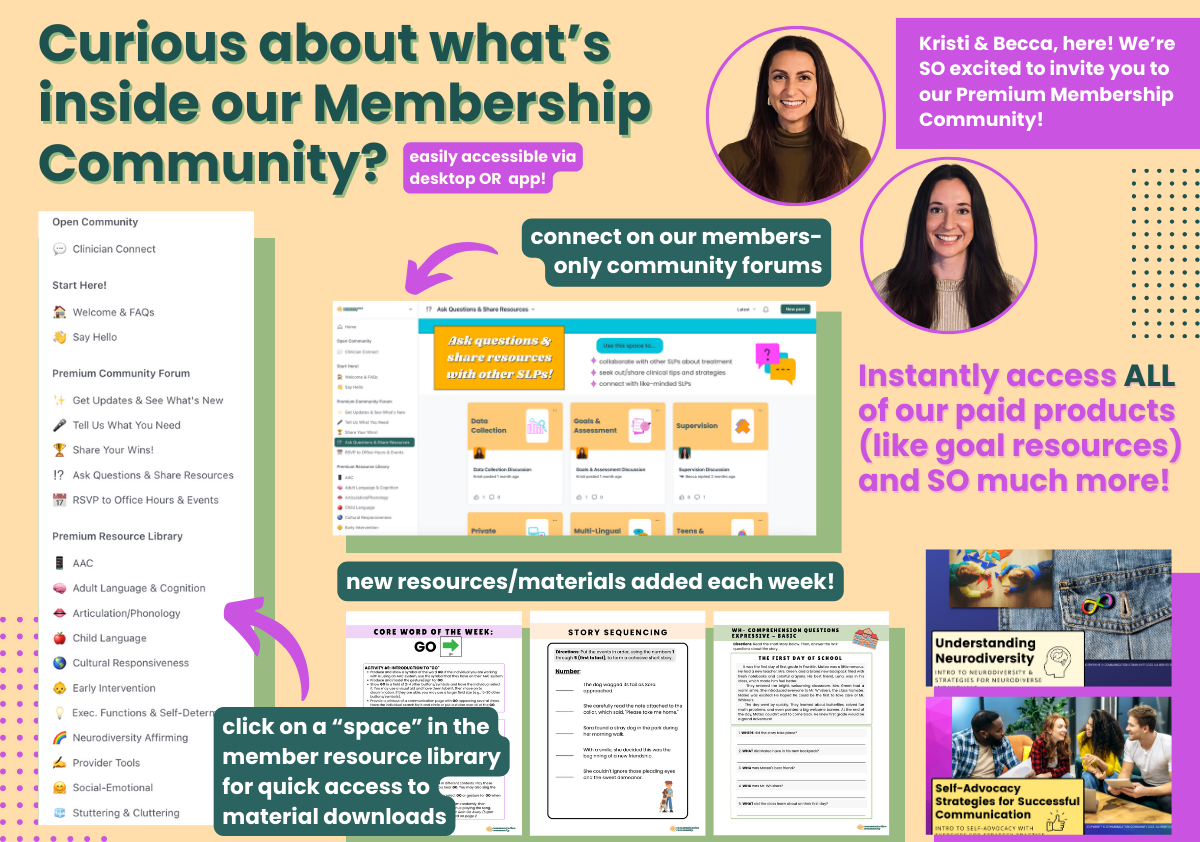
Click here if you are ready to start saving your precious prep time with quality resources!
Affiliate Disclosure: Please note that some of the links provided on our platform are affiliate links to Amazon (i.e., book recommendations). This means that, at no additional cost to you, we may earn a small commission if you decide to make a purchase through these links. We recommend products because we believe they are useful and beneficial, not because of the small commissions we might receive. Your support helps us maintain our community and continue to provide valuable content. Thank you for your understanding and trust!

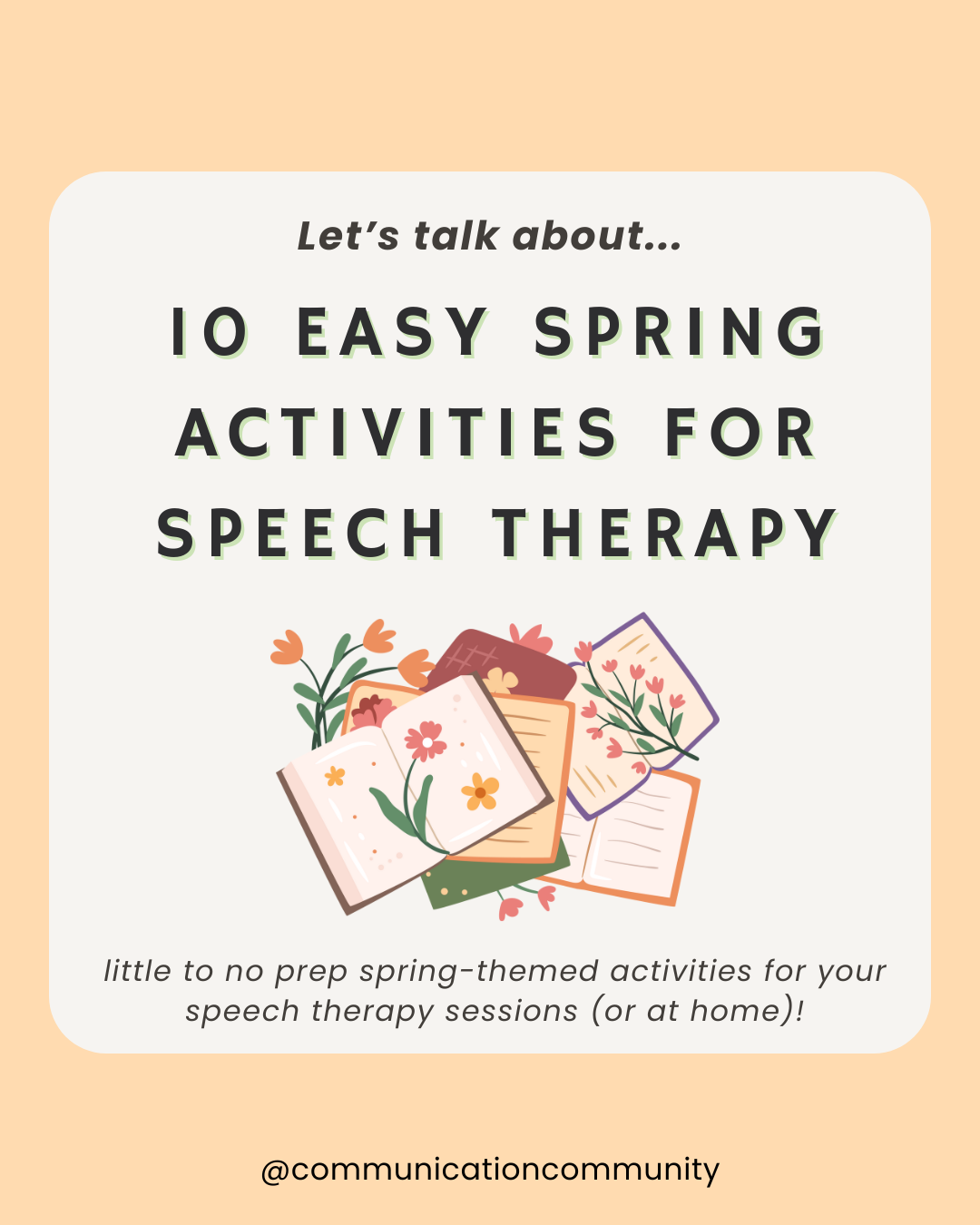
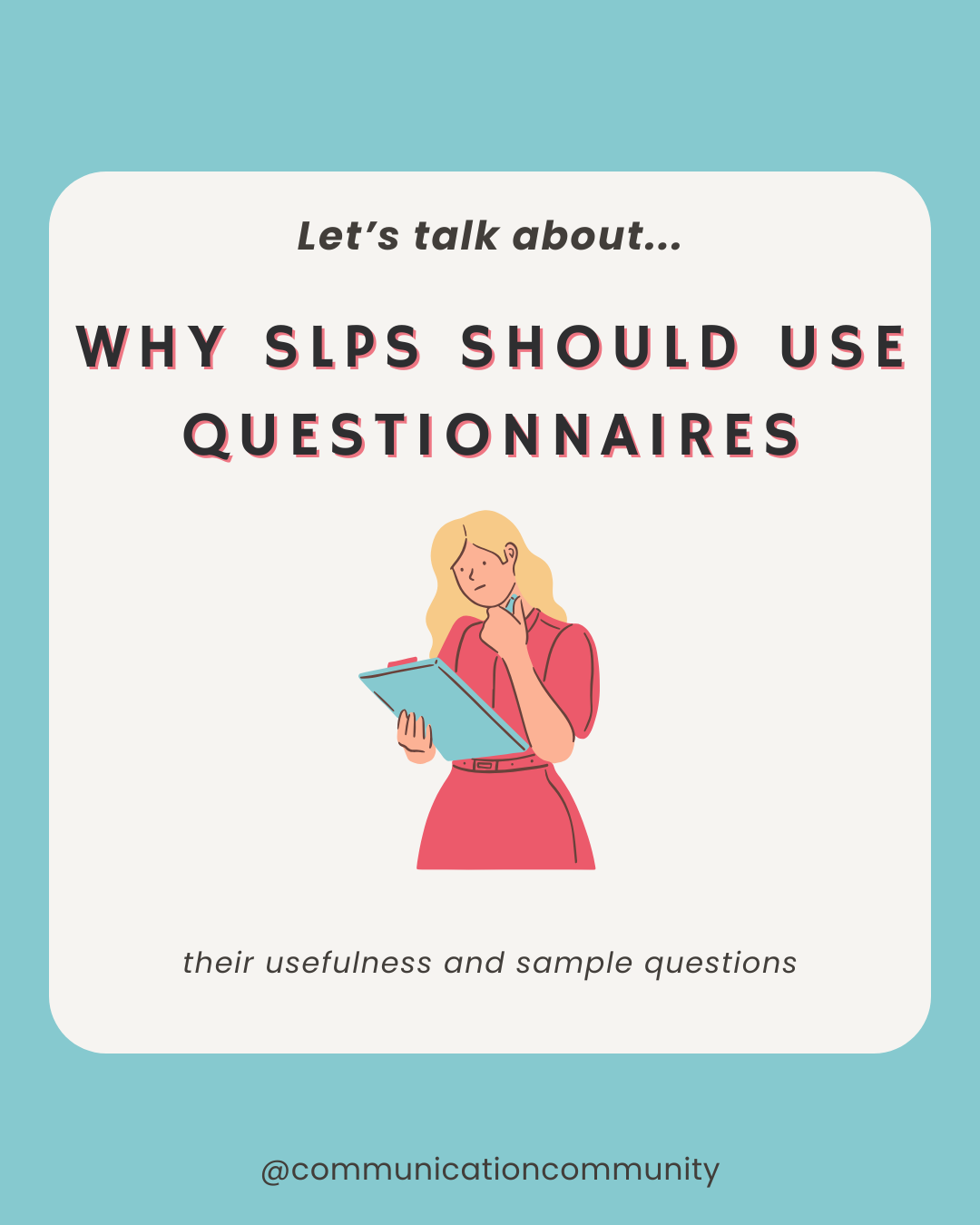
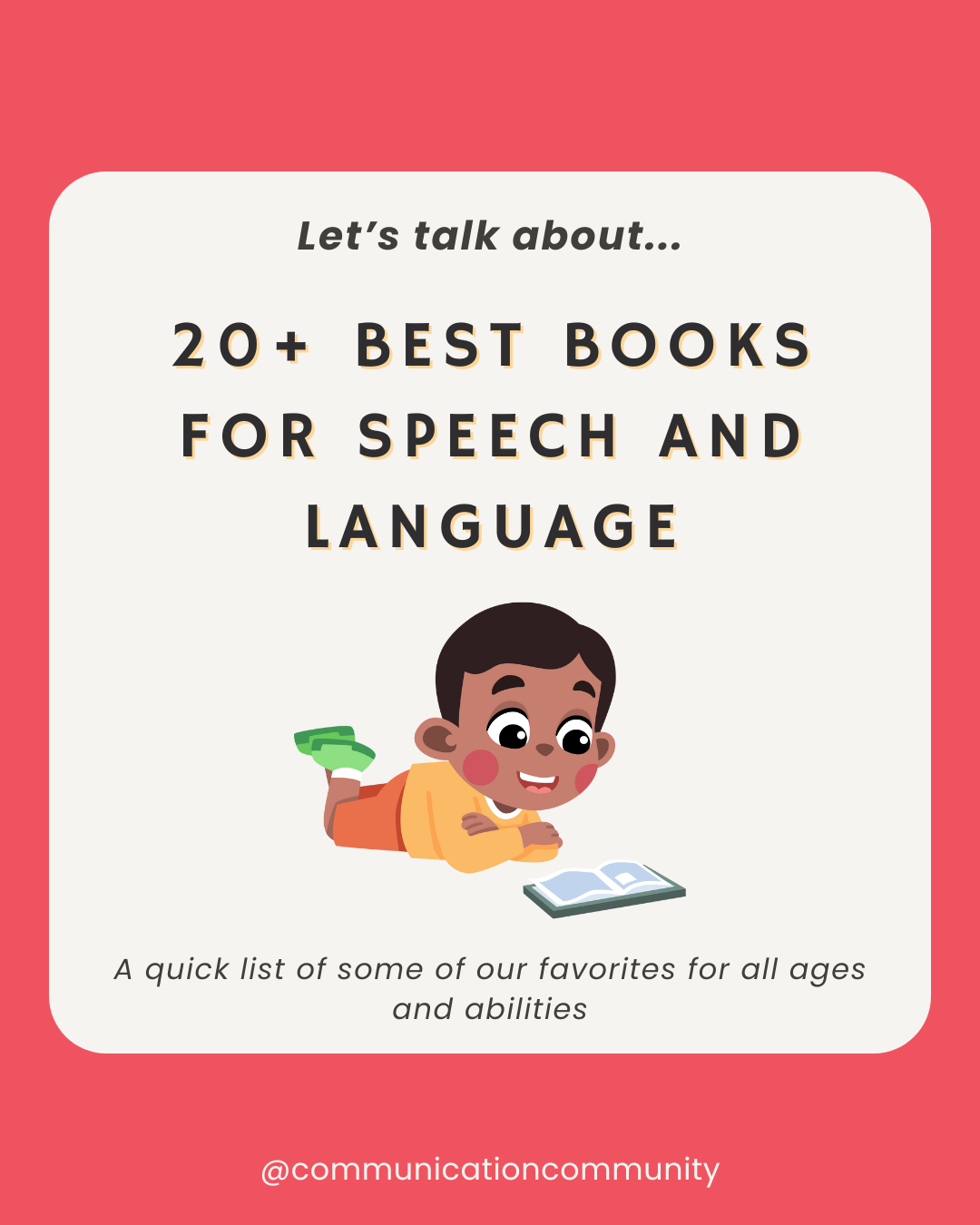
![How to Write Apraxia Goals [with goal bank]](https://www.communicationcommunity.com/content/images/2025/07/Apraxia-Goals--2-.png)
